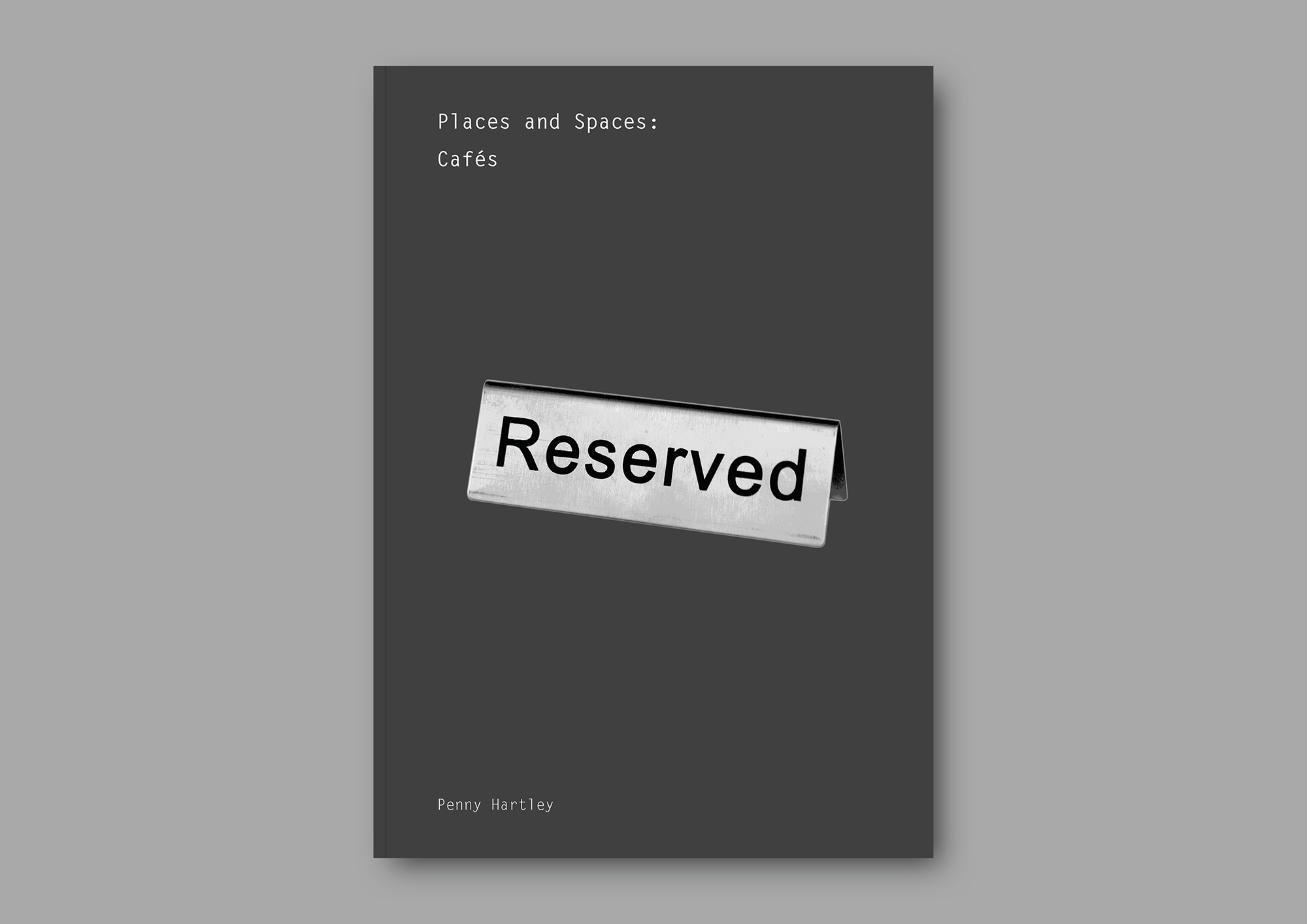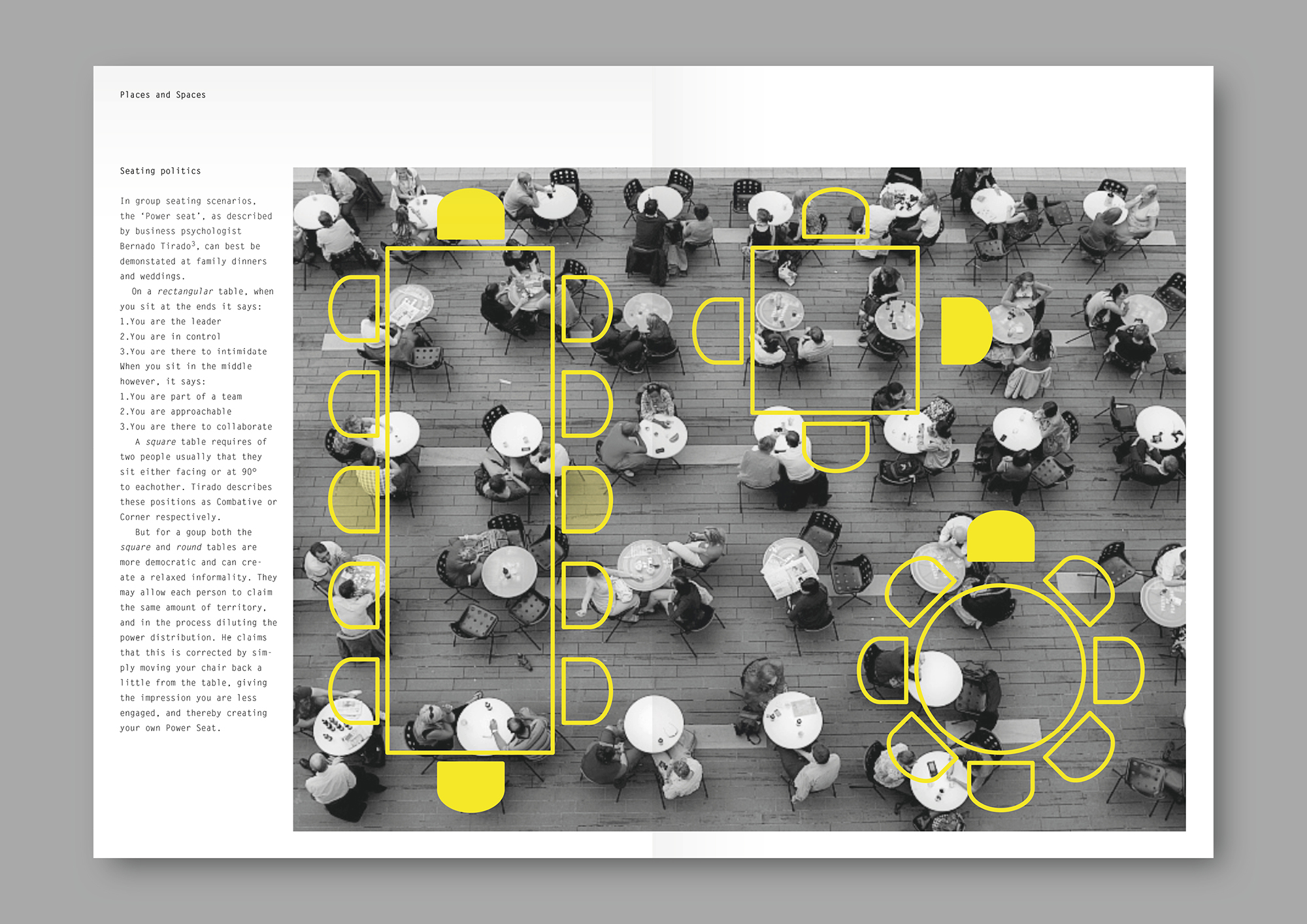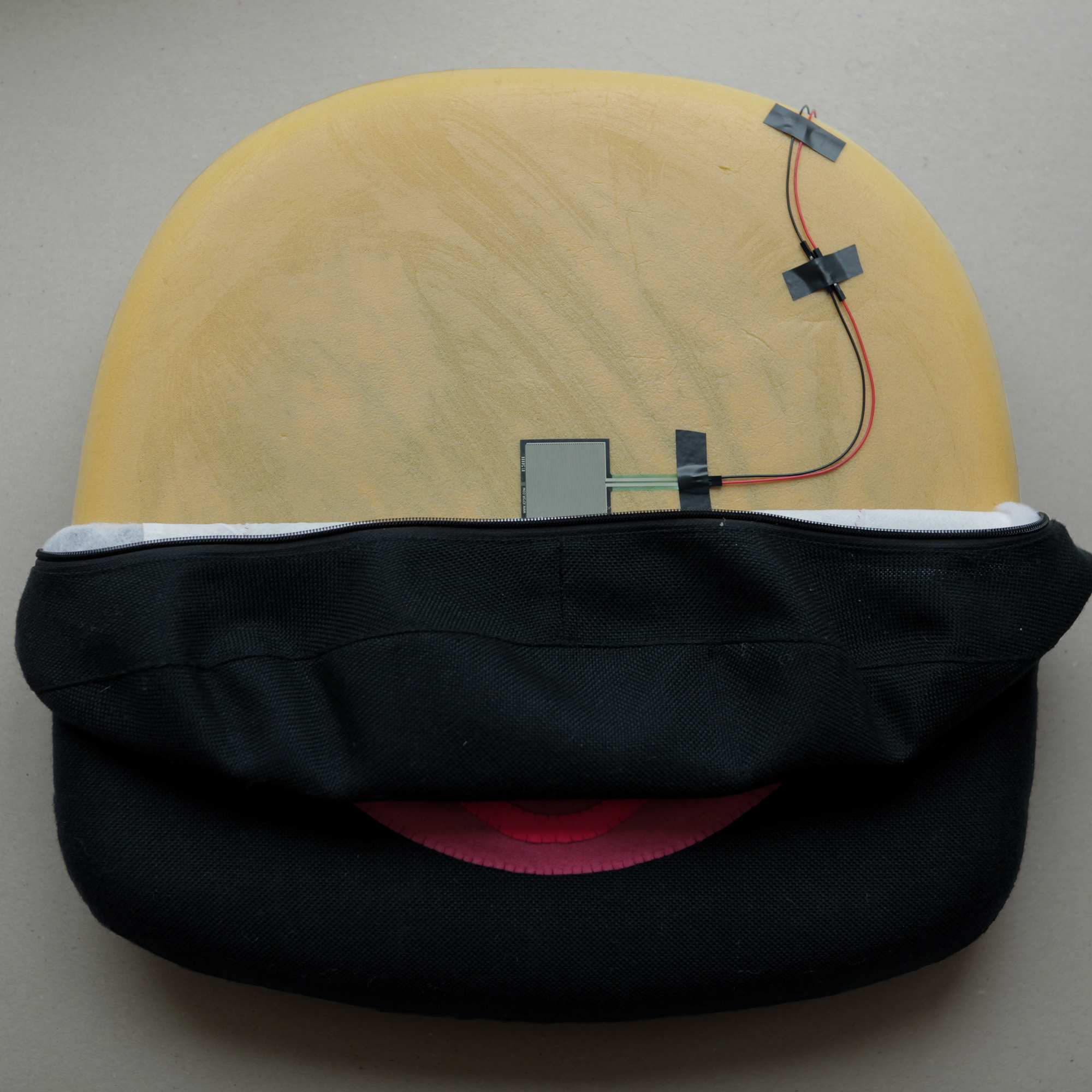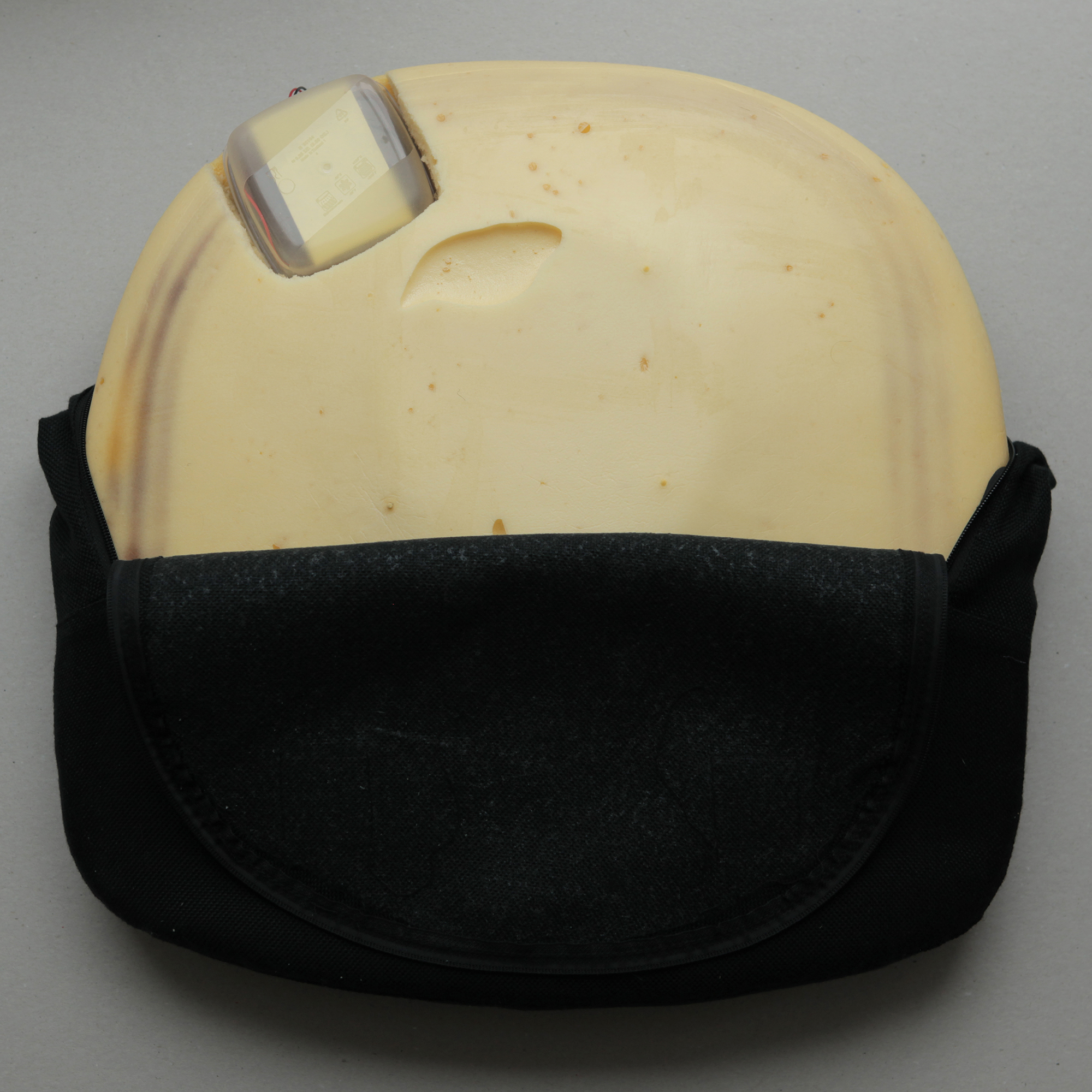Places & Spaces
(2018)MA research inquiry
Timelapse film study
Data visualisation
Publication, A4, 20pp
Physical computing
The introduction in my publication probably sums up best what prompted this research inquiry:
In public places you must constantly negotiate your share of the space with others. In these places, you might know some of the people around you, or you have seen them before and are accustomed to seeing them there but you have never spoken to them. For example in a workplace or educational institution, or on your daily commute. Or you may be sharing space with complete strangers.
Like all sentient beings, you are inately territorial. You make conscious and unconscious choices when you enter a place about the space within it that you want for yourself. Your own temporary piece of real estate.
These choices are determined by many factors, including the purpose of the visit, time to be spent there and even any desired outcome from the visit.
The project started with an 8 hour timelapse in a local coffee shop, to map how people used the space on a typical weekday. It revealed how popular seats depend on factors such as time of day, how many in a group, and the reason for the visit.
In public places you must constantly negotiate your share of the space with others. In these places, you might know some of the people around you, or you have seen them before and are accustomed to seeing them there but you have never spoken to them. For example in a workplace or educational institution, or on your daily commute. Or you may be sharing space with complete strangers.
Like all sentient beings, you are inately territorial. You make conscious and unconscious choices when you enter a place about the space within it that you want for yourself. Your own temporary piece of real estate.
These choices are determined by many factors, including the purpose of the visit, time to be spent there and even any desired outcome from the visit.
The project started with an 8 hour timelapse in a local coffee shop, to map how people used the space on a typical weekday. It revealed how popular seats depend on factors such as time of day, how many in a group, and the reason for the visit.
From this I developed an animated schematic, with the tables/bar in yellow and the seats/customers around them represented as coloured squares. Each colour being determined by the number of people in the group.
 Animated schematic of customer seating in the coffee shop over an 8 hour period.
Animated schematic of customer seating in the coffee shop over an 8 hour period.
Coffee shop interior
Grey: floor
Yellow: Table/bar
Red/pink: pillar
Pink: shelves
Grey: floor
Yellow: Table/bar
Red/pink: pillar
Pink: shelves
Seats/number of customers in group
Pale pink: 0 people
Blue/green: 1 person
Blue/grey: 2 people
Purple: 3+ people
Pale pink: 0 people
Blue/green: 1 person
Blue/grey: 2 people
Purple: 3+ people






I recorded the process, along with my writing from wider research, in this publication. The project so far, though, had relied on the filming of people in a space, in order to record their seating choices. What if I switched it around, so that the seat itself did the recording, with the data anonymised?





This smart seat counts its sitters. Its cushion conceals a pressure sensor, connected to a wireless wifi-enabled micro-controller.
The micro-controller is connected to an IO and Javascript node, with a dashboard to display the number of individual sitters, individual sitting times, and total sitting time.
The micro-controller is connected to an IO and Javascript node, with a dashboard to display the number of individual sitters, individual sitting times, and total sitting time.